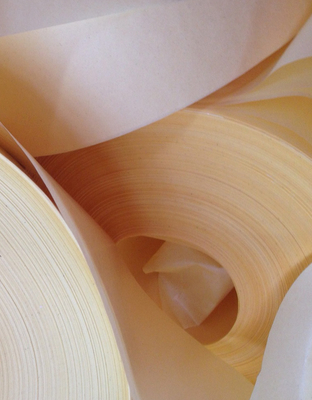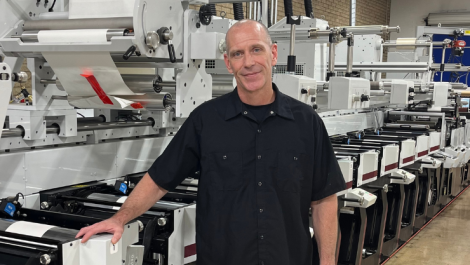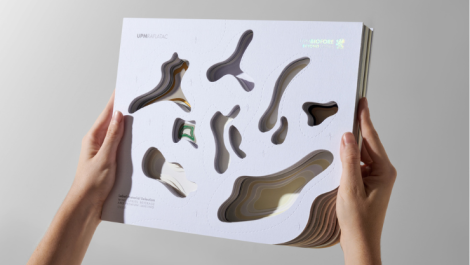Spent liner rolls
This year’s FINAT Technical Seminar drew together different elements of the label value chain to address recycling initiatives in a discussion panel.
The panellists, moderated by Mike Fairley, were Calvin Frost, Channeled Resources Group; Paolo Guagliumi, Munksjö; Erkki Nyberg, UPM Raflatac; Eric van Pottelbergh, RecuLiner; Stephan Reis, Avery Dennison, and Petri Tani, C4G.
The discussion ranged across a number of important pathways in which the industry is already a participant, or which offer possibilities for recycling or re-use.
Mr Frost and Mr Tani agreed that one way forward is for the labelstock laminators to create the demand for secondary fibre, and communicate it to their suppliers.
However, although such materials are available on the market, there is still no pull through from the brand owners, which is rarely the case in today’s competitive marketplace.
Mr Fairley, said, ‘We are not getting the message across to the brand owners and end users,’ he said, ‘and we still don’t have a system for creating a carbon footprint through the label supply chain. As an industry, we simply don’t have one clear, coherent message.’
Closed-loop, cradle-to-cradle recycling is a prime goal for FINAT members. In that context it is easier, and more successful, to set up recycling initiatives for film liner, because of its intrinsic financial value. Mitsubishi Polyester Film’s scheme for collection and recycling into their Reprocess liner programme – containing 25% of recycled material – is now handling 4-5000 tonnes per annum in the US.
The discussion led on to the concern of how release liner is defined. If the European authorities decide to define release liner as packaging waste, rather than process waste, the industry as a whole will have to recycle.
Options other than recycling are also practical in the context of the three Rs -reduce, re-use, recycle. Mr Frost provided an excellent example as to how liner simply can be rewound into rolls, is already being used by small laminators in the Asia Pacific region, for example in making self-adhesive tapes.
RecuLiner patented technology is another possible route. Eric van Pottelbergh’s company’s model, already up and running in the Benelux countries, collects and transforms spent paper release liner into high-performance cellulose fibre insulation material for the construction industry.
As the discussions drew to a close, panellists and delegates agreed on one key future action: it is FINAT, the European label industry’s association, which must take the lead, and ensure that self-adhesive labelling’s future is safeguarded.
The association must deliver the message that release liner, paper and film, has a valuable second life after it has performed the tasks in production and application that have made the self-adhesive label such a successful and enduring element of the packaging industry.






